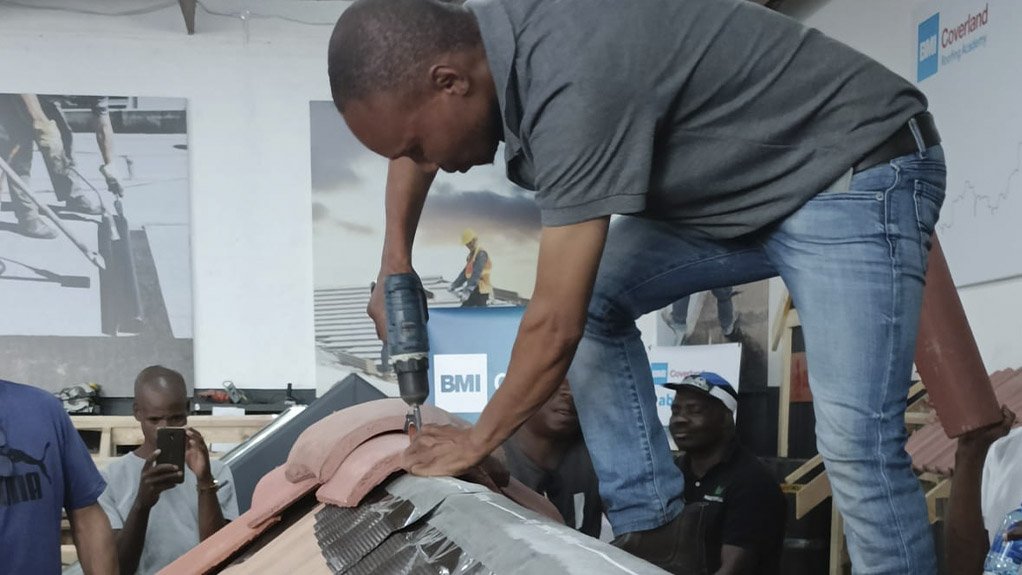
A recent PRAWA industry day that was hosted at BMI Coverland Roofing Academy introduced South African contractors to dry ridge systems
The Professional Roof Repair and Waterproofing Association (PRAWA) is ensuring that South African “roofers” stay abreast of the latest international roofing technology.
A case in point is the recent PRAWA industry day that was hosted at BMI Coverland Roofing Academy to introduce South African contractors to dry ridge systems. This state-of-the-art technology provides neater and, importantly, maintenance-free ridge lines compared to those installed using conventional mortar methods.
If undertaken correctly by a competent contractor, a dry ridge can be guaranteed for at least 20 years – an obvious benefit for property owners. This is one of the stand-out advantages of the technology for PRAWA, considering the association’s focus on quality workmanship that continues to add value.
Attached to the ridge/hip line, a dry ridge system is storm proof. Unlike mortar systems that eventually crack under high temperatures and then leak, a dry ridge system is highly UV resistant. Its waterproofing material also prevents water from entering the ridge line. Meanwhile, vapour rising from inside the roof space is circulated out through the ridge line. This is facilitated by a ventilation system that creates airflow through the roof ridge line.
However, the system also provides many benefits for “roofers”, considering the speed and ease at which it can be installed on new or existing roofs. A competent contractor will be able to complete a 10m ridge in about 2,5 hours. This is also achieved with significantly less labour than is required to construct a ridge line of the same length using conventional mortar methods. Moreover, it accommodates both bold and flat roof tiles and the clean ridge and hip lines do not discolour.
Ridge Trees, spaced about 600mm apart, are secured to either side of the counter batten. A top batten is then installed on top of the Ridge Trees.
A Dry Ridge Roll is rolled out and aligned onto the top ridge batten. The release foil of the roll is pulled off one side at a time to expose the butyl strips. These are then adhered to the high point of the tile before being moulded into its recesses. This process is repeated on the other side.
Where the ridge and hips intersect, the Dry Ridge Roll is placed onto the hip/ridge with a sufficient overlap.
Tile fittings are then secured together with Ridge Clips using a 4,5mm wood screw to complete the installation.
The many “roofers” who attended the workshop were very impressed with the technology. They confirmed that it was a more efficient method of constructing ridge lines while also providing many benefits that could be easily marketed to property owners.
“I definitely believe that there is a market for the technology in the country. I believe that the savvy property owner will be very interested in technology that saves in maintenance costs over a 20-year period, over-above its other benefits that help to create a healthier home living space. Meanwhile, as a savvy contractor, I am always interested in technology that will help me to save in construction time and costs,” Gerrit van Niekerk, owner of RM Construction, said.
Managing Director of BMI Coverland Roofing Academy, JJ Conradie, concurs. “The technology has already taken the international roofing market by storm, and South African property owners and ‘roofers’ are bound to follow suit. We are not that far behind when it comes to international trends in roofing technology. With so many benefits offered by the system, I believe that dry ridges will become the norm in the country – a trend that will be driven by contractor and property owner, alike,” Conradie says.